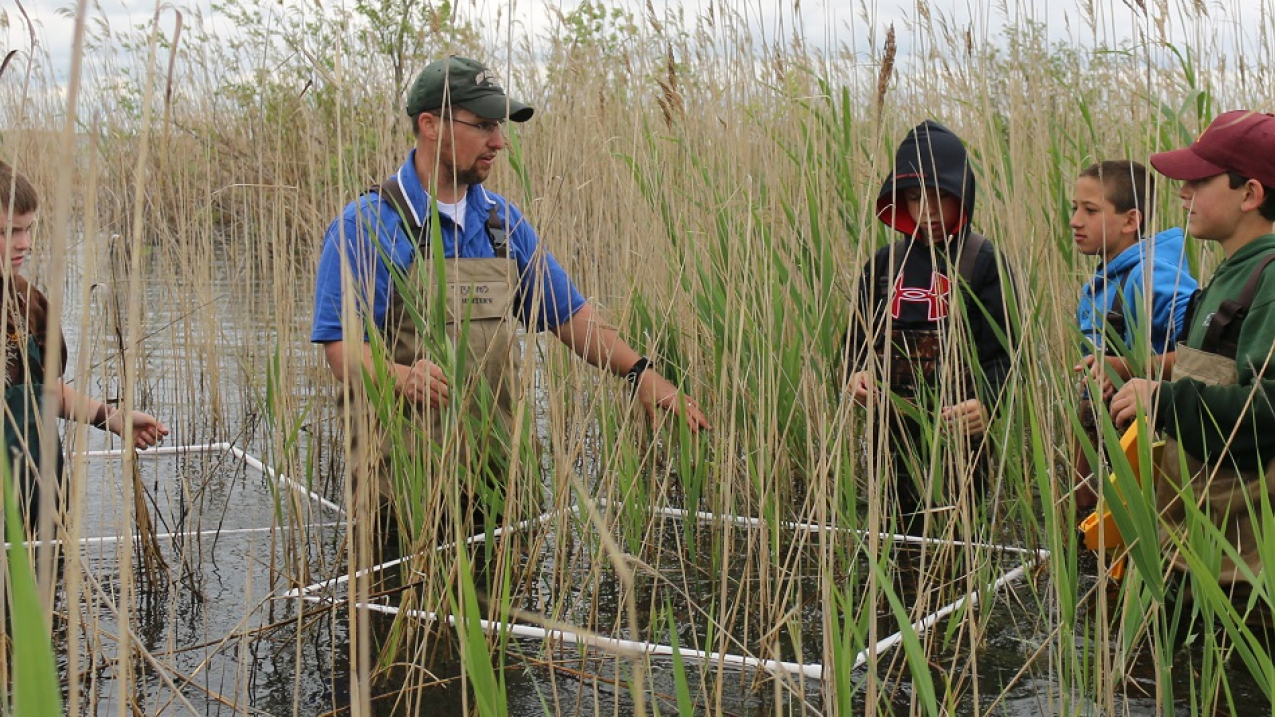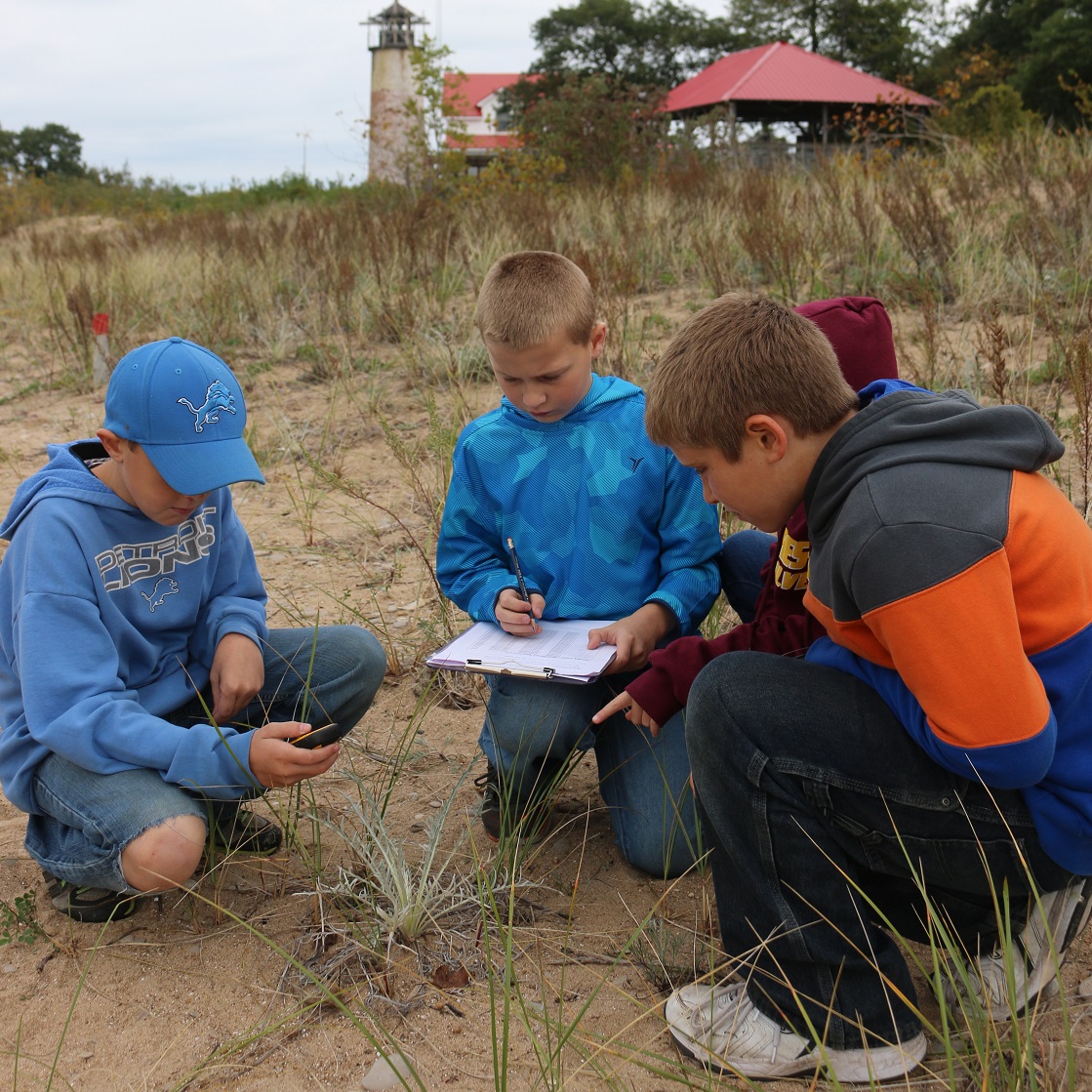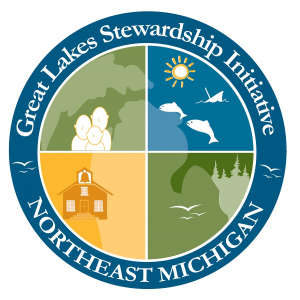Place-based education is a proven method of bringing students closer to their communities and developing knowledgeable and active stewards of the environment. Citizen science enlists members of the public in the collection of valuable scientific data. Combining the two, the Northeast Michigan Great Lakes Stewardship Initiative sponsors an award-winning suite of programs that promotes place-based stewardship education experiences for K-12 students.

Students measure Phragmites plant densities. The data is used to monitor progress of efforts to manage this invasive species on Charity Island. Photo credit: Michigan Sea Grant. (Image credit: Michigan Sea Grant)
One such experience took place earlier this summer when fourth graders from Au Gres-Sims Elementary School went on a Lake Huron adventure to Charity Island in Saginaw Bay, Michigan. Toting clipboards, data sheets, and global positioning system units, the young scientists were charged with mapping populations of the federally threatened Pitcher’s Thistle plant known to inhabit sandy dune areas of the island’s coastline. They also collected data to monitor Phragmites, an invasive plant threatening this same coastal habitat. This citizen-science project helped accomplish the goals of a recent bi-national Lake Huron Biodiversity Conservation Strategy. Of course, students were also prepared for a little fun exploring the island — getting their feet wet, blowing milkweed seeds and visiting a historic lighthouse.
This research project was just one of many sponsored by the Northeast Michigan Great Lakes Stewardship Initiative (NEMIGLSI) partnership facilitated by Michigan Sea Grant, Michigan State University Extension, NOAA Thunder Bay National Marine Sanctuary, and other partners. It is one of nine regional network hubs across Michigan connected as part of the Great Lakes Stewardship Initiative, a statewide network funded by the Great Lakes Fishery Trust, and has been supported also by the Sea Grant Center for Great Lakes Literacy and NOAA B-WET Great Lakes program.

Alongside Great Lakes scientists and natural resource professionals, youth are helping to conserve Lake Huron’s biodiversity, map threatened and endangered species habitat, restore native fisheries, monitor vernal pool wetlands, and manage invasive species. Other students monitor water quality, enhance aquatic habitat, and investigate marine debris. Environmental science, technology, engineering, and math (E-STEM) learning is especially evident when students collaborate with scientists to design research projects investigating environmental issues, use GPS and GIS technology to map biodiversity or water data, engineer underwater robots and contribute to fisheries science, and employ math to track populations of both rare and invasive species.
During the 2015-2016 school year, the NEMIGLSI supported 94 educators in 32 schools across eight northern Lake Huron counties, involving more than 4,100 youth (approximately 20% of the region’s total student population) in stewardship projects. Since 2009, more than 19,000 students have engaged as Great Lakes stewards, E-STEM learners, and valued community leaders through the NEMIGLSI.

Recently this network was honored with an international Environmental-STEM Innovative Education Award for $25,000 from the North American Association for Environmental Education and UL Innovation for empowering youth through E-STEM experiences applied to accomplish place-based education stewardship projects.



